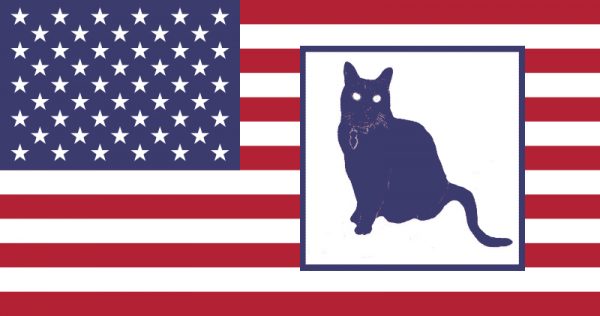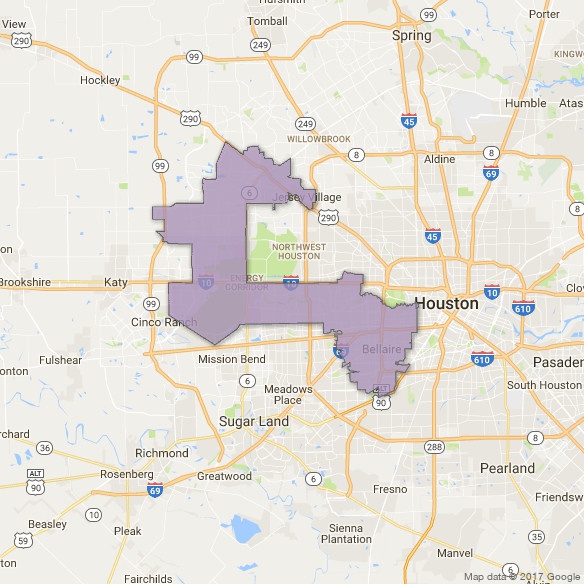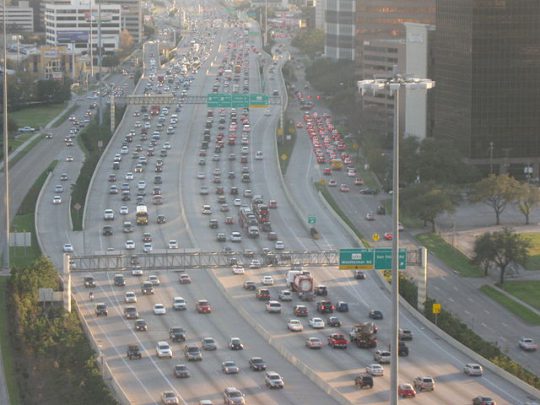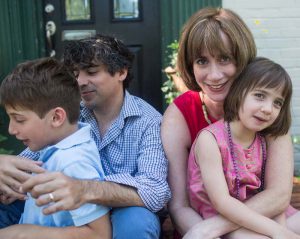
Well, it is Election Day in the U.S., the closest thing we have to a national civic ritual. And in California, that means another of our exceptionally long ballots. Here is this November’s sample ballot plus voter guide:

[Click to enlarge.]
I have to admit, as voter guides go, this one has a pretty cool cover with a detail of the spiral staircase at San Francisco City Hall. And although it’s not the largest we have had, but still pretty substantial.

[Click to enlarge.]
Indeed, elections here can be a bit unwieldy. I find myself voting on all sorts of things, like arcane budget issues or judges that I feel completely unqualified to make a decision on. Of course, there are fun things like having our Proposition 19 (legalization of marijuana for sale in the state) and serious things like Proposition 23, an attempt to suspend our leading climate and energy law – a law that is actually a point of pride for many of us as we watch the much of the country (and our national leaders) fail on the issue. One sign I particularly liked was a dual “Go Giants!” and “No on 23” banner hanging from a building on 3rd Street, with the subtitle “Beat Texas (Oil)”. As often happens, baseball and elections collide. Our celebrations yesterday may end up being short lived depending on how things go today.
In addition to a sense of civic duty, you get a cool sticker:

I quite like having English, Spanish and Chinese all represented – there is something that feels right about it, a sense of people from different backgrounds coming together for a collective purpose. Of course it is not all the languages spoken by residents of the city, but it is still a decent cross section. It also made me think about a statement I had heard yesterday, thinking more optimistically about the future, that demographics is currently on the side of those with a more cosmopolitan and progressive view of the world as the older generations with their traditional notions of racial, linguistic, religious, national and sexual boundaries fade away. But that’s a story for another time.
My current polling place is at SOMArts Cultural Center, so going to vote also means taking in the current exhibition, the annual El Día de los Muertos (Day of the Dead) exhibition. This years theme was “Honoring Revolution with Visions of Healing” and featured “altars and installations that will honor the dead and provide offerings to the living.” It was certainly interesting to have an exhibition with the theme of “revolution” adjacent to the place where I was voting. And while the theme may be connected to the 100th anniversary of the Mexican Revolution, many of the pieces were more general in nature, honoring loved ones who have passed away, or tied to current events, such as disasters and war. For example, I was drawn to this piece because it featured musicians:

[Judy Johnson-Williams and Judy Shintani. Honoring Construction Workers, Rebuilding of the New Orleans, Revolution with Visions of Healing. (Click image to enlarge.)]
At first I was not quite sure what the construction workers were about. But once I understood that it honored the workers who were helping to rebuild New Orleans, the combination of music and construction made sense. It has a double resonance, looking back on Hurricane Katrina, but there are also echoes of the disastrous oil spill in the Gulf of Mexico this summer. The piece was a collaboration by Judy Johnson-Williams and Judy Shintani. The also had another piece nearby, “All Cats We Have Loved”:

[Judy Johnson-Williams and Judy Shintani. All the Cats We Have Loved. (Click to enlarge.)]
Their accompanying statement was very touching:
For all our kitties who have been run over by autos, are missing in action, and disappeared into the ethery to go onto their next lives. Hopefully you are having fun pouncing and are purring up a storm! We miss you! Meow!
The passing of a loved was also the subject of one of the featured pieces, an alter by artist Adrian Arias to his mother who passed away this year. The large installation was almost entirely white, but with bits of color in the arranged objects. Please visit his blog for images of this piece, including a performance by the artist. Individual remembrances were also part of Susana Aragon’s “Life is a Revolution.” This piece featured tribute images on transparencies arranged on the wall, a series of moving screens onto which images were projected, and a mirror in which ones own reflection was project (as the artist suggests, it was a bit of a challenge to make the reflection work). The piece has a very moody but also clean quality to it that kept my attention:

[Susana Aragon. Life is a Revolution. (Click image to enlarge.)]
In their piece “Trapped”, Ytaelena and Bruce Lopez present a narrow and dark cave-like space which viewers can enter. It seems inviting enough, with a warm earthy aroma. But inside there is the faint sound of a person calling for help, and a detached hand in the middle of some vegetation. The piece is inspired by the Gulf of Mexico oil spill and the earthquake in Chile.
Finally, on a more positive note, Lanell Dike invites viewers to write messages of love and gratitude, and place them on an array of lights in her interactive piece “Make a Love Offering.”

[Lanell Dike. Make a Love Offering (close-up view)]
I did decide to participate and left a message, not far away from where I cast my ballot only a little earlier.





 The southeast “bulge” part of the district includes sections of Houston that lie within the I-610 loop, or “Inner Loop”. I-610 separates the downtown sections of Houston from outer neighborhoods and surrounding communities, including towns like Southside Place. It is bisected west-to-east by the new I-69 (US 59). The area where these two highways intersect would not look out of place in Los Angeles.
The southeast “bulge” part of the district includes sections of Houston that lie within the I-610 loop, or “Inner Loop”. I-610 separates the downtown sections of Houston from outer neighborhoods and surrounding communities, including towns like Southside Place. It is bisected west-to-east by the new I-69 (US 59). The area where these two highways intersect would not look out of place in Los Angeles.

 Heading north and west, we come to the middle section of the district, which is largely a horizontal rectangle bounded by the mighty I-10 to the north, and which extends almost to Katy in the west. Beltway 8, also known as the Sam Houston Parkway/Tollway, bisects this segment of the district. Just to the west of the beltway are the Briarforest neighborhood and the ominously named Energy Corridor. Not surprisingly, several major energy corporations have operations in this area, as do several other businesses. The Buffalo Bayou – we at CatSynth are still not entirely sure what separates a bayou from a river – cuts through the district. It was subject to major flooding during Hurricane Harvey. In addition to the bayou itself cresting at record levels above flood stage. releases from the Barker Reservoir caused severe flooding in adjacent low-lying neighborhoods. We have sources that have informed us that the floodwaters in the Energy Corridor area were most unpleasant.
Heading north and west, we come to the middle section of the district, which is largely a horizontal rectangle bounded by the mighty I-10 to the north, and which extends almost to Katy in the west. Beltway 8, also known as the Sam Houston Parkway/Tollway, bisects this segment of the district. Just to the west of the beltway are the Briarforest neighborhood and the ominously named Energy Corridor. Not surprisingly, several major energy corporations have operations in this area, as do several other businesses. The Buffalo Bayou – we at CatSynth are still not entirely sure what separates a bayou from a river – cuts through the district. It was subject to major flooding during Hurricane Harvey. In addition to the bayou itself cresting at record levels above flood stage. releases from the Barker Reservoir caused severe flooding in adjacent low-lying neighborhoods. We have sources that have informed us that the floodwaters in the Energy Corridor area were most unpleasant.

 The final section of the district cuts an inverted “L” between State Highway 6 and State Highway 99, the outermost loop around Houston, bounded on top by US 290. In all, the district has an odd shape indeed, but not so odd when one considers the tradition of gerrymandering, an art which has been taken to new heights by Texas’ Republican-controlled state government. Its shape has long preserved it as a safe Republican district – it has elected Republicans to Congress consistently since George H.W. Bush in 1966. But the city and surrounding area have been changing, and it is seen as vulnerable to flip to 2018.
The final section of the district cuts an inverted “L” between State Highway 6 and State Highway 99, the outermost loop around Houston, bounded on top by US 290. In all, the district has an odd shape indeed, but not so odd when one considers the tradition of gerrymandering, an art which has been taken to new heights by Texas’ Republican-controlled state government. Its shape has long preserved it as a safe Republican district – it has elected Republicans to Congress consistently since George H.W. Bush in 1966. But the city and surrounding area have been changing, and it is seen as vulnerable to flip to 2018.









 Even though it is disconnected from the U.S. mainland, it does have interstate highways, such as
Even though it is disconnected from the U.S. mainland, it does have interstate highways, such as 
 Of course, the part of Hawai'i I most want to visit is not Honolulu, but rather the “Big Island” of Hawai'i. In addition to being the largest, it is the youngest, and the one that is still volcanically active. Highway 11, which is part of the
Of course, the part of Hawai'i I most want to visit is not Honolulu, but rather the “Big Island” of Hawai'i. In addition to being the largest, it is the youngest, and the one that is still volcanically active. Highway 11, which is part of the 


 So how to continue our “primary highway series” when so many states are voting at once? Well, we can't visit them all, but we touch several important places with a trip along
So how to continue our “primary highway series” when so many states are voting at once? Well, we can't visit them all, but we touch several important places with a trip along 





